What is Growth Hacking? The Only Guide You Need to Become an Almighty Growth Hacker
1. What is growth hacking?
2. How do you “growth hack?”
3. Why is it called hacking?
4. Is there a growth hacking funnel?
5. What does it take to be a growth hacker?
6. Growth hacking in the future
7. Famous growth hacking strategies
8. Growth hacking tools
The term “growth hacking” first appeared in Dropbox when their marketer Sean Ellis came up with the idea of giving out extra gigabytes to users for inviting new members. This helped the cloud service quickly attract new customers and increase profits.
What is growth hacking?
Growth hacking is any mechanism or action based on constant experimentation that leads to rapid product and business growth.
Being a kind of hack for going inside the users’ minds, each technique of the growth hacking is an ingenious invention that, due to its originality and novelty, allows businesses to “hook” people on a new product or service.
Although many use the terms “growth hacking” and “growth marketing” interchangeably, they are different. While traditional marketers are busy thinking about long-term strategies, expanding functionality, planning sales, advertising, and interacting with partners, the main task of experts in growth hacking is constant experimentation and analysis of the obtained results.
How do you “growth hack?”
So, what are the essential things that a growth hacker does?
-
Seeing a product from different perspectives
When you are stuck on a problem, it usually helps to look at it from another perspective. The same applies to products or services. Is the product priced correctly? How well does it serve the market? How else can the users utilize it?
-
Really thinking outside the box
A lack of new ideas and experimentation can kill your product. Growth hackers always use new ideas instead of traditional or expected ideas and try new things. They say: “If you want to follow a guide that outlines every step for your job, you need to become a middle manager; If it’s easier for you to follow orders, then join the army; But if you want to grow a product/business then get curious and growth hack.” Perhaps something hasn’t been tried until today because it’s a terrible idea, but maybe it’s just because no one has ever been curious enough to figure out if it would work.
-
Going beyond traditional marketing
Both growth hacking professionals and traditional marketers work to understand, acquire, and retain customers, but their perspectives and approaches are different. For instance, while traditional marketers work on increasing engagement to improve the brand, growth hackers focus on increasing the final growth of the business: more customers who pay.
One of the effective approaches to accelerating this kind of measurable growth is collaborating with a specialized link building agency. Such agencies help brands improve their online visibility, attract qualified leads, and build authority in their niche—often becoming a vital part of a startup’s growth hacking strategy.
Why is it called hacking?
Many people suppose that growth hacking is linked to computer hacking. However, growth hacking is all about the mindset where growth is at the heart of the entire strategy. It is a combination of marketing tactics, technology, analytical practices, creative thinking, and psychology. And in order to grow, you need to “hack” marketing, data, and customer psychology.
Is there a growth hacking funnel?
If you have ever put oil in your car, then you should know what a funnel is. It has a broad opening at the top, and as oil runs down it, the opening becomes smaller until the oil reaches the engine. When it comes to sales, a funnel is a way to guide people towards a particular goal (purchase, subscription, etc.)
It often happens that marketing is more engaged in customer attraction, and testing of hypotheses is chaotic and, therefore, ineffective.
Building a funnel will help you break down user interactions into stages and conduct experiments throughout the funnel.
The growth hacking funnel usually consists of the following stages a customer goes through:
Acquisition (attracting new customers);
Activation (motivating users to take action);
Retention (turning users into repeat customers);
Referral (enticing customers to refer their friends, family, colleagues);
Revenue (generating ongoing revenue).
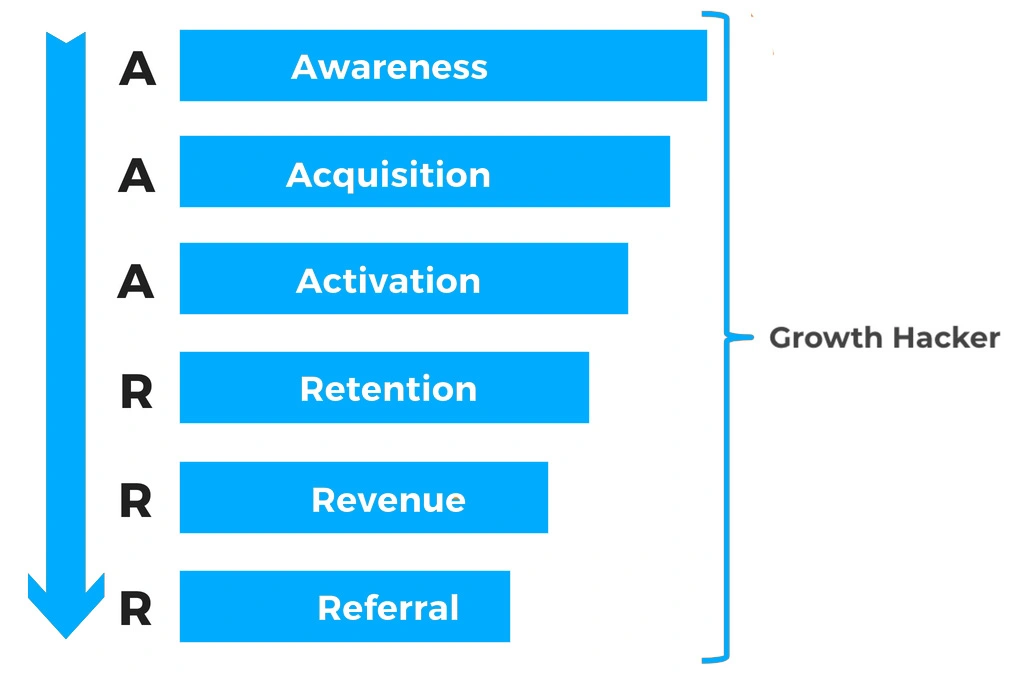
At the Acquisition stage, growth hackers test hypotheses about acquisition channels. At the Activation stage, they carry out experiments on the user experience within the product or service. And so on down the funnel.
You might also like: “Best Tips and Ways to Build the Right Sales Funnel for Your Business.”
Ingenious growth hacking examples
Keen to try growth hacking yourself? Here are some growth hacking techniques to experiment with.
-
Use the same content in different ways
Consider repurposing your content into different forms for various communities. For example, you can turn blog posts into podcasts, .pdf, etc.
-
Add unexpected conversion points
Experiment with calls to action, original phrases, and language on landing pages.
-
Make your best offers even better
Do you offer “buy two, receive three items” in one order? Then add a free consultation, shipping, or a coupon code for the next purchase, etc.
-
Let customers generate content for you
Consider hosting a contest asking your supporters to take pictures or shoot a video showing how they enjoy your product or service. Not only do contests attract new followers, but you can also utilize this user-generated content elsewhere in the form of testimonials or just post the photos on your social media.
-
Create unique audiences for advertising
Don’t just target men 30-60 years, but be more specific and creative. Who might want to buy your product? What type of audience has the problem your product can solve? Check the data about your website visitors. Who are they? What pages do they read?
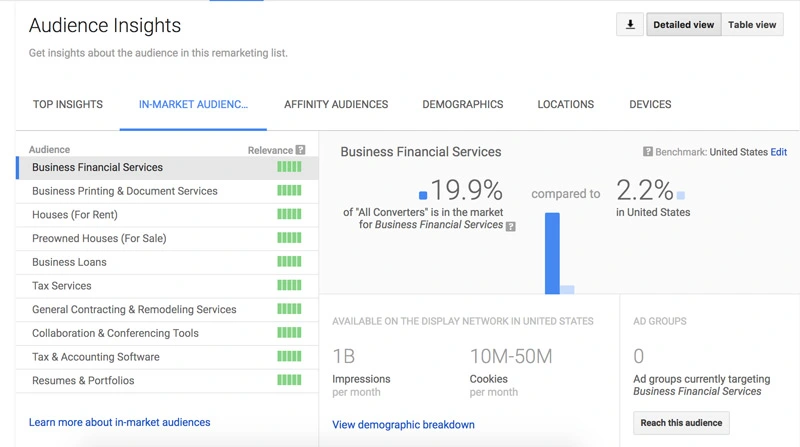
-
Update your old blog posts
You might have some good posts, but new readers don’t see them anymore. Make these posts more in-depth, more shareable, more relevant to current time and events. Pay attention to seasonal blog posts.
-
Go beyond email newsletters
For example, you can send a special offer in exchange for a review.

source: Rafflepress
-
Make your content super-easy to share
Add simple share triggers to get more exposure for your content. Those include information gaps, previews, promising a solution, great design, high-quality imagery, social currency, calls to action, and more.
-
Collaborate within your niche
Partnering up with similar or complementary brands is among the best growth hacking ideas that will help you expand your audience. Consider hosting a webinar with a partner, run a joint contest, and so on.
-
Create free lead-generating tools, offer eBooks
Think about the ways to get more leads. These might include a free additional tool or a guide users can download in exchange for their email addresses.

source: Hongkiat
-
Make your brand proactive on social media
Post engaging news, comment on challenges and accept them. Make sure your brand voice is distinct.
What does it take to be a growth hacker?
So, what things do growth hackers do that traditional marketers usually don’t?
-
Always learn new things
Growth hackers are curious. They always wonder about things and ask questions. Only such an approach can drive them forward.
-
Combine traditional marketing with hacking
Growth hacking isn’t better than traditional marketing. They are just different. If you want to succeed, take the best things from both fields.
-
Use all available data, and more
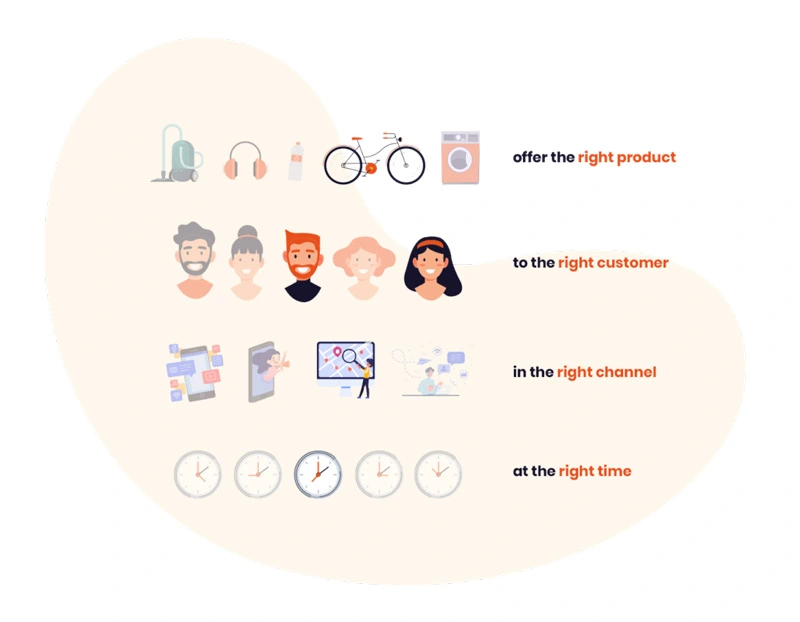
source: Datatalks
Growth hackers use the findings from the data to increase customer attraction, retention, revenue, and ultimately business growth.
-
Combine pure math with creativity
The best growth hackers are both mathematics and creative.
-
Solemnly believe in your ideas
If you don’t believe in what you are doing, you won’t be able to convince the team that this crazy thing is worth trying.
-
Use any means to reach success
Learn new tactics, use unpopular tools, dig deeper and deeper to find your unique ways of growing fast.
You might also like: “The Most Effective Ways to Structure Your Email Signatures to Kickass Your Business Communication.”
Growth hacking in the future
Many startups fail because they believe that if they create a great product, there’d be a line of customers out the door. This is simply not true. You must have all the information and understand what your product has to attract new users and keep your existing ones. And then, you need to come up with various solutions that would accelerate this process. Understanding how to create and promote great products has always been an essential quality of successful companies. We think that there will be more and more businesses using the growth hacking model in the future.
Soon, the growth hacker cult will no longer be like a lone wolf, but full-fledged growth teams will come to replace it. Not only will these teams play an important role in businesses’ development, but more and more companies will become more aware of the impact of growth hacking on their overall success. If you want to get started right away, check out these growth hacking tools.
You might also like: "8 Reasons Schools Are Not Teaching Growth Hacking Today"
Famous growth hacking strategies
We all know Instagram, Uber, Tinder, Paypal. But do we analyze what they did to grow so fast? Let’s check their growth hacking tactics to see what growth hacking looks like in practice.
-
Tinder
This dating service is like a fun game. To promote the app, the Tinder team went to a nearby campus to recruit potential users.
They showed people how to install and use the app. Soon, the entire campus got carried away with looking for partners in Tinder. So gracefully, the service gained 15,000 subscribers.
As you can see, growth hackers aren’t afraid to go public if it helps to improve user experience and grow business.
-
LinkedIn
The audience didn’t use the full potential of the platform; many had only one connection. Then LinkedIn’s growth hacking team came up with a decision to meet new users with a question. Immediately after registration, they asked the users, “Where have you worked before?” After users answered the question, they received recommendations to add colleagues.
A single question motivated people to complete their profiles and make new connections. Pageviews increased by 41%. Users filled their profiles 38% more actively.
-
Paypal
Paypal knew all about referrals before it went mainstream. The referral program allowed the company to grow its subscriber base to five million in just a few months.

They offered a $10-$20 registration bonus, and word of mouth spread the message of the generous platform very fast. Users were drawn in and enjoyed using the product.
-
Zapier
Zapier is an online automation builder that connects all tools and helps users manage them. But how to promote a product that no one sees?
Zapier attracts new users and shows the benefits of the product through a blog. The company provides guidance on how to get the most out of other tools.

For example, they explain how to take notes in Evernote or automatically generate reports and graphs in Google Docs.
Zapier appears in search for specific queries, attracts and educates newcomers, and subtly advertises the product. Today the blog has more than 600 thousand readers.
In some cases, it’s more efficient to reach your target audience through content, rather than standard calls to action.
-
Instagram
Instagram knew that the essential condition for growth is product-market fit. If your product doesn’t fit the market, no promotions or growth hacks can help you. Understanding customers’ needs, desires, and expectations are key to making a product or service that people will be happy to use and share with friends. By doing in-depth market research, Instagram was able to get those insights.
-
Reddit
Reddit is a social news site where registered users can post links to information they like. In addition, there are heated discussions where you can promote your business, earn a rating, and much more. The site looks a bit old-fashioned, but it is very popular. On Reddit, you can sometimes get information that is unlikely to be found elsewhere.

In general, the entire site is based on user activity. If they upload links, vote for the best materials, etc., then the site lives. If there is no activity, then there is no point for visitors to go there.
Therefore, at the initial stage, in 2005, when Reddit was just created, the main task of founders was creating activity.
They made tons of fake accounts and simulated real activity on the site. Due to this, real visitors had the impression that the site was alive, and there were real users on it. After several months, the painstaking work started to pay off, and the site grew really fast.
-
Facebook
Facebook is a company that has used a lot of growth hacks in its history. That is why their audience exceeds 2,7 billion users worldwide.
A long time ago, the company’s growth hackers created special widgets that could be placed on sites. Each owner of a website or personal blog could place a widget with a link to their group, public page, or personal account. It was beneficial for both the user and Facebook. The user got the opportunity to promote their account on the social network. And people who wanted to know what happens to the owner of the website or the company had to join Facebook. This way, Facebook received an additional promotional channel and another great way of “dragging” users to their network.
How about offline businesses?
Let’s look at Houston Airport’s example.
As every successful business does, Houston Airport also listens to its audience. They conduct surveys, collect feedback, and improve the process of service delivery.
One survey discovered that most customers feel stressed because of problems with baggage claim. They had to wait nine minutes to get their bags. It was too long.
Soon, the airport invested several million dollars and changed the baggage claim process. As a result, the waiting time was reduced to six minutes. But customers were still unhappy.
The airport started to look for a new way to solve the problem. And the idea turned out to be ingenious. Growth hackers suggested changing the place of baggage claim. It was now much further from the passengers’ arrival point. While the person reached this place, the required six minutes had already passed, and they didn’t have to wait for so long.
And for example, one pool maintenance company gave each of their clients a brochure about their business and asked them to hand it over to neighbors who have pools. Some kind of nonsense, you say. Who will advertise someone’s services to their neighbors?
But the trick was that both the neighbor and the person who gave them this brochure received the same discount on all company services. See, a growth hacking strategy doesn’t necessarily have to be complicated to ensure business growth.
Growth hacking tools
So, you feel like you want to try some growth hacking tactics too? Then you need to know some valuable tools that will make your work a lot easier.

Growth hacking social media? With Buffer, you can manage all your social media channels from one place. The tool allows you to plan, collaborate on, and publish your content to grow your business in a fast and convenient way. Buffer also offers great analytics features.
-
Canva

Growth hackers often need to design something, such as an image for a post on social media or a visual for a blog. Try Canva for that.
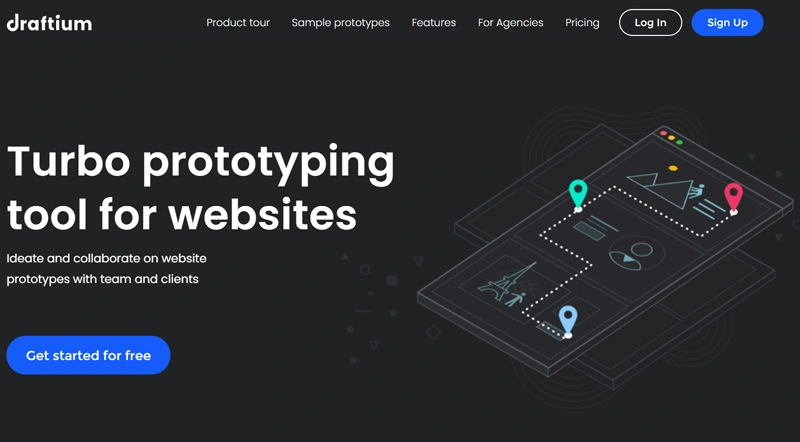
Perfect for creating mockups for designers.
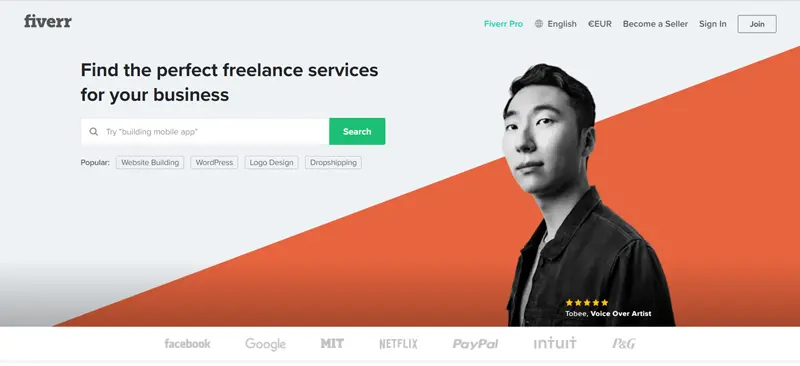
Chances are you won’t be able to address all issues on your own. Luckily, you have Fiverr where you can find freelancers from all over the world and bring any idea to life.
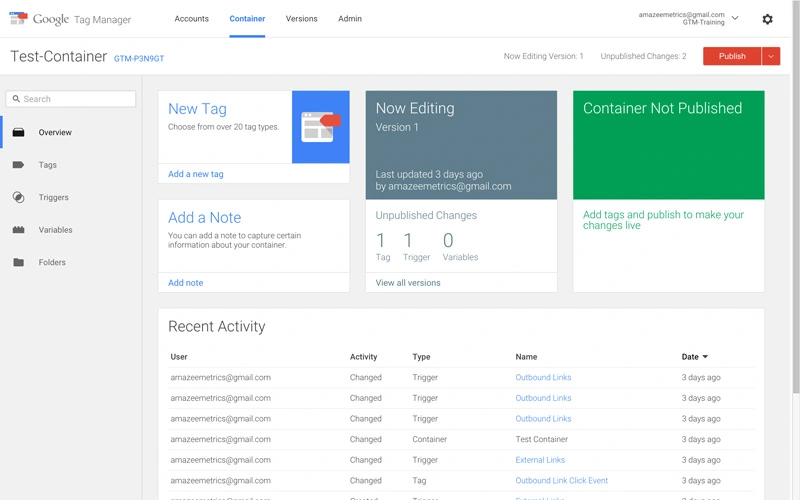
The tool gives growth experts the developer capabilities without bothering the developer.
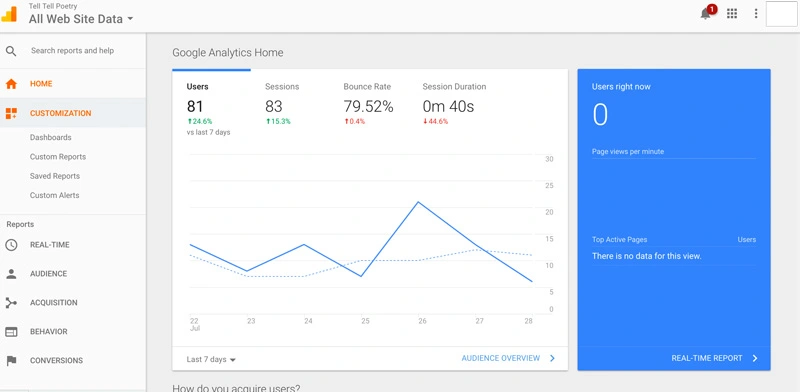
As we mentioned multiple times, growth hackers work with data. Google Analytics is really helpful if you need to find out where your traffic is coming from, what content performs best, what users are doing on your website, etc.

This one is a great choice to be able to keep track of your growth hacking experiments.

If you are going to work with SEO for your company, then you need to try GrowthBar. This Chrome Extension will show you the keyword difficulty of your search term, provide you with a list of similar keywords, and give the most important SEO statistics for each result.

Check our Hemingway or Grammarly to deliver only the best grammatically correct content to your audience. Both apps have convenient Chrome extensions that check your texts in real-time (for example, in Google document) for grammatical, language, or spelling errors.

With Hotjar, you can analyze the behavior of your users through heatmaps and recordings of your site visitors in action.
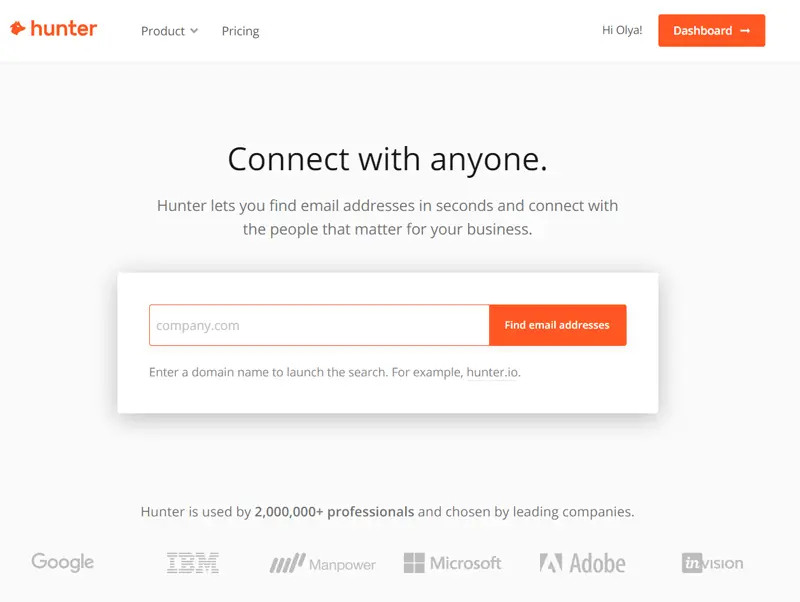
Can’t find someone’s email address? No worries, Hunter.io will do all the hard work for you.
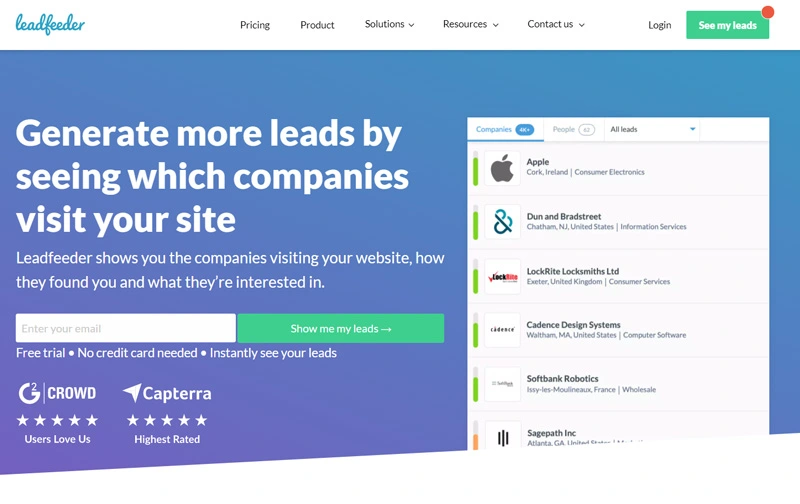
This is a great tool for those growth hacking b2b sectors. If you use LeadFeeder, you always know what companies have visited your website, how they found you, and what things they were interested in. This way, you can easily optimize your site for them.
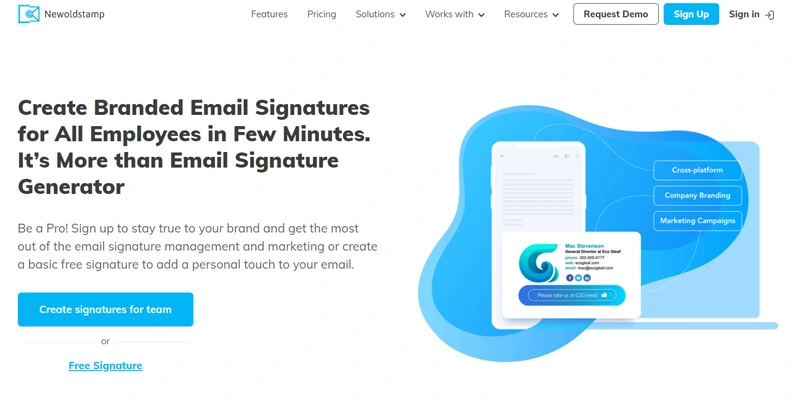
Did you hear about email signatures? It’s not only a great way to introduce your contact data in a professional way, but also a chance to get bigger exposure for your content. For example, you can put a bright call to action in your signature, leading email recipients to your recent blog posts. Once you install the signature in your email client, it will be attached to every email you send. This way, more people will see your offers, new releases, blog posts, events, etc. With Newoldstamp, the best free email signature creator, you don’t even have to code or design. Simply enter your contact data, upload your photo or logo, choose fonts and colors, and you are done.
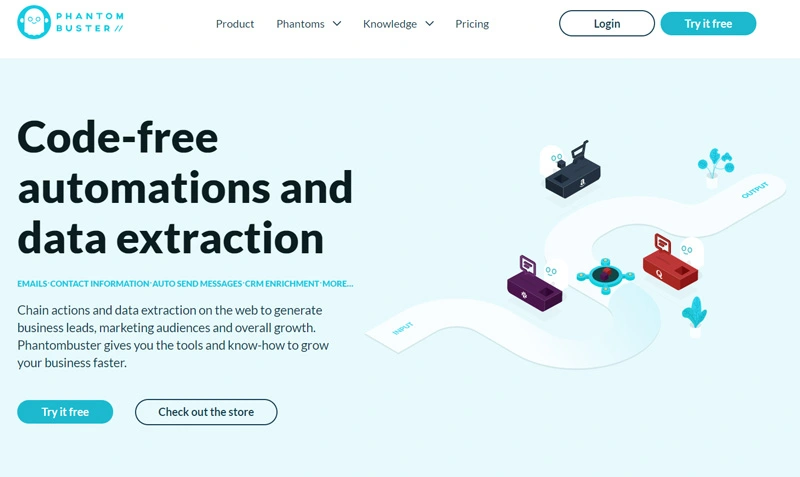
The tool lets you automate everything you do on the web. For example, it allows you to send LinkedIn users invites or send messages automatically based on the characteristics of your ideal customer.
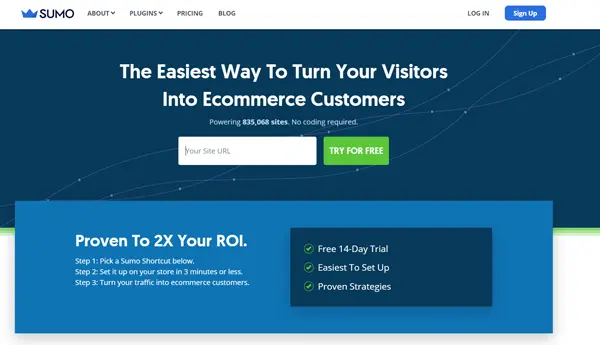
If you want to place a banner or any other object on your site to get more email subscribers, use Sumo. It’s free, and you don’t need to learn coding.
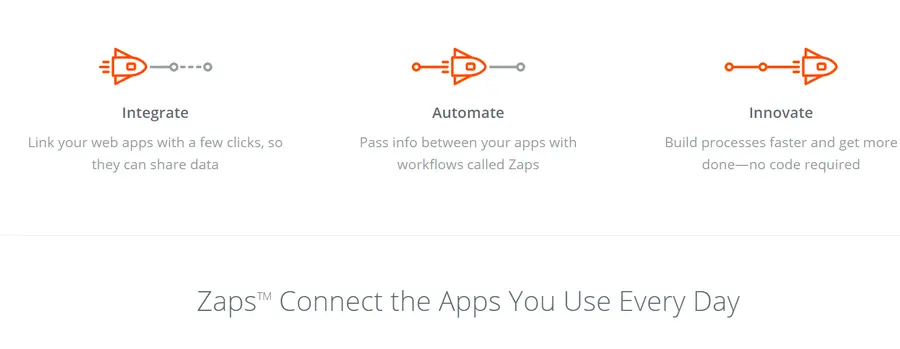
Zapier lets non-techies create growth hacking automations, quickly and painlessly. For instance, it is possible to automatically record all your Typeform respondents in your Mailchimp account.
Conclusion
Many people believe that growth hacking is a magic formula, or that there are a few lines of code that you include on your app or website and get millions of visitors or downloads overnight. But that’s far from the truth. Growth hacking is hard work that requires time, curiosity, patience, and a set of skills that we described in this guide. Use examples of well-known growth hacks from top companies and get inspired.

